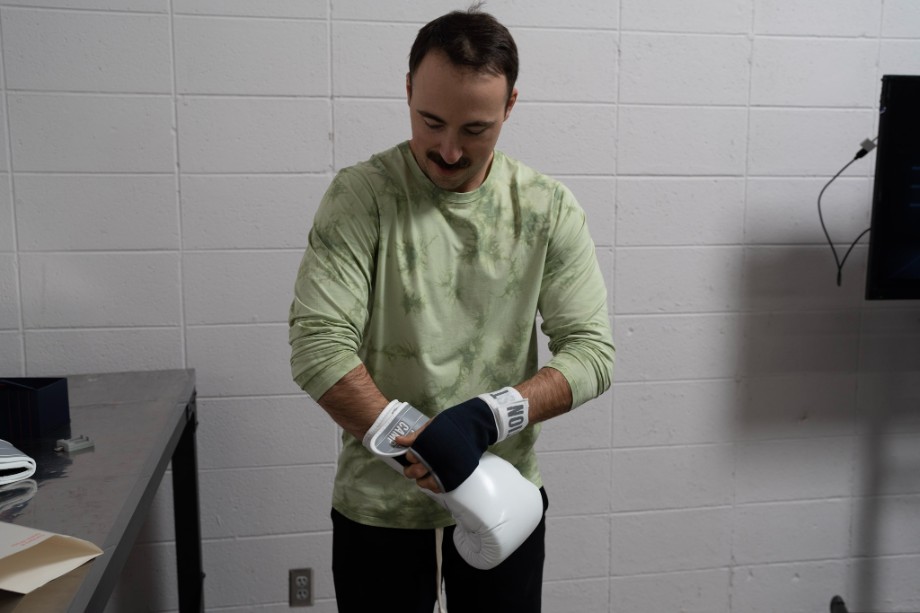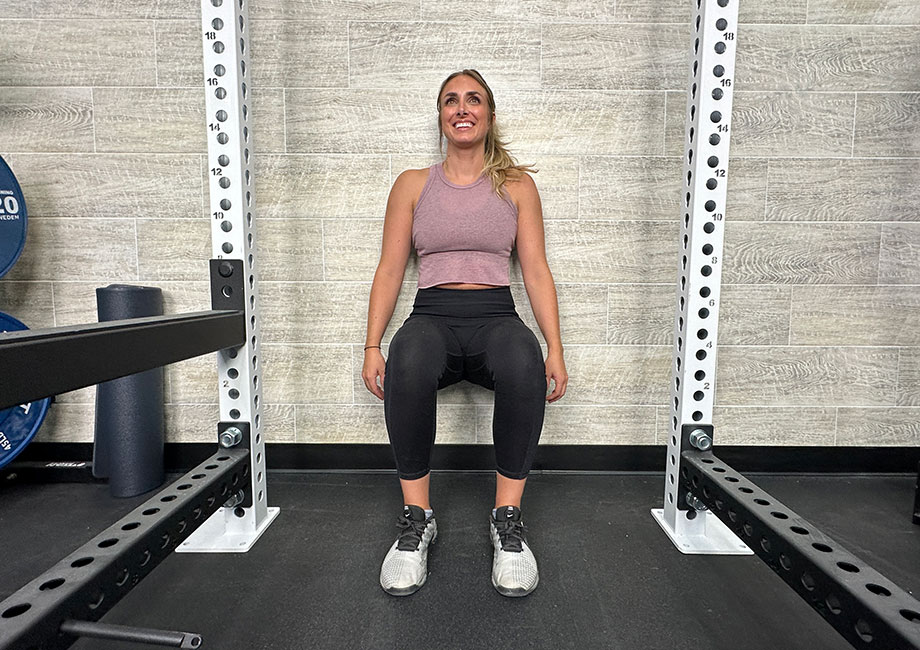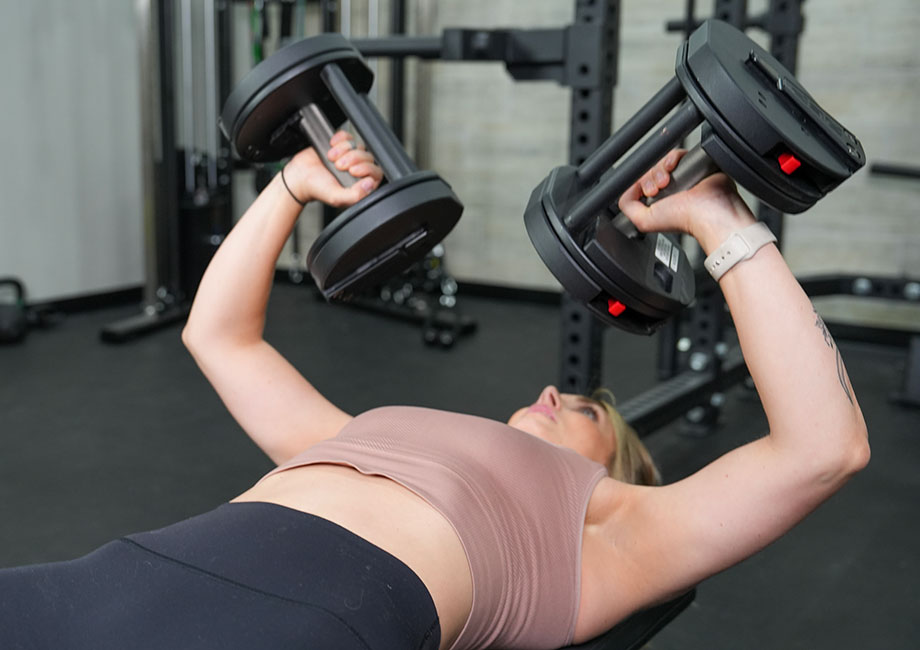People box for different reasons. Some do it for fun at the end of their workouts, and others to burn extra calories as a part of their weight loss program. You also get amateur and professional boxers who do it for a living. I’m certainly not at a professional standard, but as a certified personal trainer (CPT), I enjoy boxing to mix up my cardio and occasionally release my frustrations from the day.
RELATED: Exercise for Anger
Regardless of why you’re boxing, a strong boxing stance is important. Why? Your stance can help you to deliver fast and powerful punches, provide balance and mobility, and help you to feel more confident in the ring or when sparring.
I’ll begin this guide by explaining the three components of a proper boxing stance, the different types of stances, and the benefits of a strong stance. To finish, I’ll suggest a few easy ways to incorporate boxing into your training.
So, let’s ring the bell and get started.
What Does a Proper Boxing Stance Look Like?
Regardless of whether you’re boxing against an opponent, using a punching bag, or shadowboxing in an exercise class, a proper boxing stance involves three components:
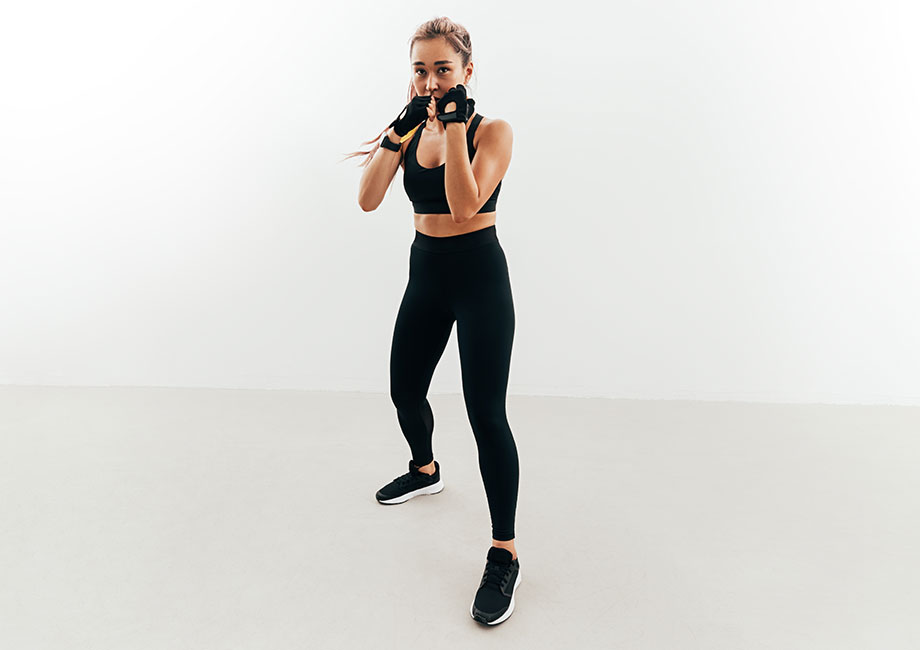
Foot Position
In the correct boxing stance, you’ll want your feet shoulder-width apart. Depending on the stance you choose (more on this below), you’ll likely have a lead foot and a back foot. You don’t want your feet to be facing your opponent, nor do you want them to be perpendicular. Instead, your feet should be at roughly 45-degree angles. Additionally, you’ll want to keep your body weight on the balls of your feet (rather than your heels) to allow for balance and mobility.
Body Position
Because your feet are at roughly 45-degree angles, your torso should also be at the same angle. In boxing, this position is ideal. If you’re directly facing your opponent, there’s more of you available to get hit. However, if you’re facing completely sideways, you can’t clock everything happening around you, and it’s difficult to generate power behind your punches. You’ll want to rotate your body’s position with every punch.
Hand Position
The best hand position depends on your chosen stance (I’ll cover this in-depth below). However, most people fight in an orthodox or southpaw stance. You’ll have a lead hand and a rear hand with both positions. Your lead hand should be slightly in front of your chin, with your rear hand to the side of your chin. Both hands should be in a fist and constantly moving to prepare you to react to your opponent’s next strike.
What Are The Different Stances In Boxing?
Now that you know what a proper boxing stance looks like, let’s discuss the different types of stances. There are four main stances I’ll cover: orthodox, southpaw, crouching, and hands down.
Orthodox Stance
The orthodox stance is the most popular for those who are right-handed. In this stance, you position your left foot and left hand forward (close to your face), with your right foot and right hand farther back. The benefit of this stance is that you can jab and defend with your left hand while providing strong punches with your more dominant right hand.
Examples of orthodox fighters in boxing include Muhammad Ali, Floyd Mayweather, and Mike Tyson. As for MMA, Georges St-Pierre, Chuck Liddell, and Khabib Nurmagomedov all use the orthodox stance.
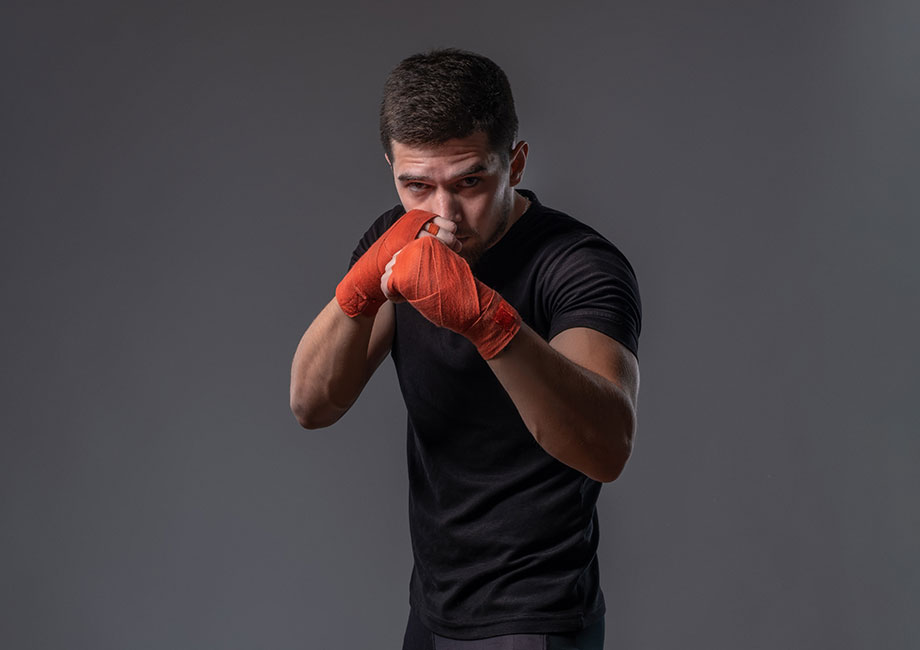
Southpaw Stance
If your dominant hand is your left hand, you’ll likely prefer the southpaw stance. This stance is the mirror opposite of the Orthodox stance above. In the southpaw stance, your front foot is your right foot, and your rear foot is your left foot. Your right hand will be close to your face and above your left hand.
Southpaw fighters are less common than orthodox fighters, so if this is you, you may gain an advantage over your opponent if they have less experience with left-handed boxers. Manny Pacquiao and Joe Calzaghe are two boxers who used the southpaw stance. In mixed martial arts, Conor McGregor and Anderson Silva are both southpaw fighters, though McGregor will occasionally switch to orthodox.
Crouching Stance
For this boxing stance, you want to bend your knees and cover your face with both hands. Your elbows are tucked into your body, protecting your torso from body shots.
One benefit of using the crouching stance is that you’re constantly doing head movements, which means your opponent will find it difficult to hit you. When you punch, the compact position allows you to generate a serious amount of power. Crouching isn’t for everyone, but if you can master it, it’s a useful tool in your back pocket.
Mike Tyson popularized the crouching stance in the ring. As you saw above, he mainly used the orthodox stance but would switch to the crouching stance at crucial points during his fights.
Hands-Down Stance
As the name suggests, your hands aren’t close to your face when in the hands-down stance. Instead, they’re nearer to your abdominal region. This is a risky stance, and I wouldn’t suggest using it throughout an entire fight. Instead, you’d switch to it for short periods to shake things up (for example, when a fight isn’t going your way) or to taunt your opponent.
Most fighters aren’t used to their opponents using the hands-down stance, so you may confuse and frustrate them by employing it. You may also find that you can quickly move around the ring in this stance because of the lower hand position. If you’re confident enough to use the hands-down stance, it’s worth trying.
What Are the Benefits of a Strong Boxing Stance?
The perfect boxing stance can help you to deliver fast and powerful punches, provide balance and mobility, and help you to feel more confident in the ring. If you’re boxing recreationally or as part of a cardio workout, a proper stance is just as important as your lifting form and may help prevent injury and strains.
Editor’s note: Having accidentally punched myself due to a sloppy stance during a boxing workout, I highly recommend paying attention to your positioning and taking things slowly at first.
Helps Deliver Fast and Powerful Punches
If you don’t have a strong boxing stance, you’ll find it difficult to deliver fast and powerful punches, period. Jabs, crosses, hooks, lead hooks, uppercuts, and combos make or break your success as a boxer.
Want even more power? Train your legs. A 2022 Journal of Strength and Conditioning Research1 study states, “Training that improves lower-body strength without increasing total-body mass (to maintain weight category) may positively influence punch capacity in highly-trained amateur boxers.” Most of your punching power comes from your legs and core, therefore, as important as your boxing stance is, you must also strengthen your lower body.
RELATED: Quad Exercises to Build Strength
Helps Provide Balance and Mobility
A strong boxing stance helps to provide balance and mobility, both of which are imperative for success. Being balanced means you’re less likely to be knocked down by your opponent, especially when you’re in the middle of throwing a punch. Mobility helps you move quickly and efficiently around the ring, dodging punches and controlling the distance as needed.
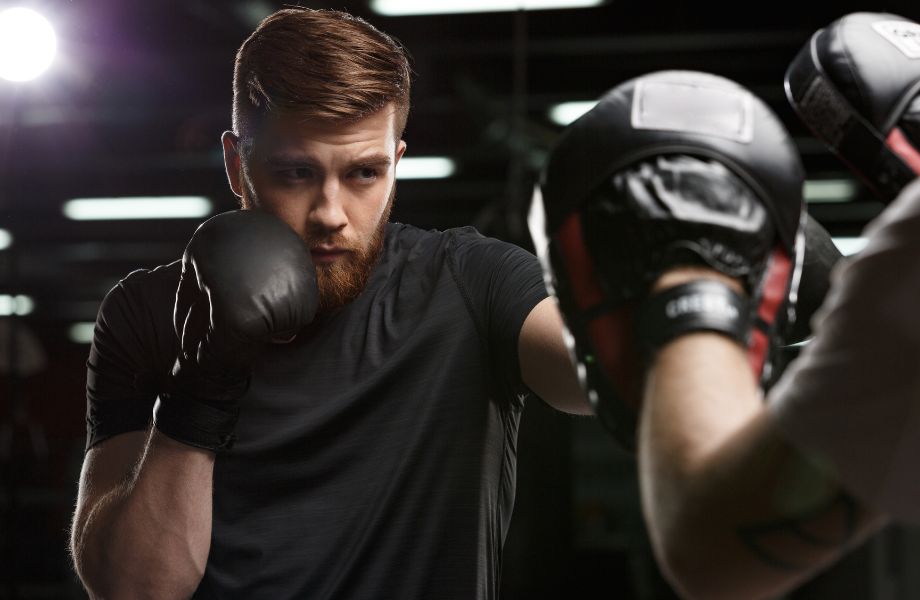
RELATED: Best Mobility Exercises
Helps You Feel More Confident in the Ring
In my experience, the correct fighting stance can help you feel more confident in the ring or when sparring. When I did beginner boxing training, my boxing coach taught me the fundamentals to help me improve my stance, footwork, and punches. It took some time—nothing comes easy—but the result was worth it.
How Can You Incorporate Boxing Into Your Training?
There are several ways to incorporate boxing into your training. Here are some examples:
Replace Your Current Cardio With Boxing
Most of you—myself included—have a go-to cardio machine. For me, it’s the elliptical trainer, while others enjoy (tolerate?) the treadmill or StairMaster. If you’re experiencing machine burnout and need an alternate option to reap the benefits of cardio, put on a pair of boxing gloves. Do your strength training as normal, then replace your current cardio session with boxing. This can either be at the end of your resistance workout, or on a separate day—the choice is yours.
Use Boxing to Warm-Up or Cool-Down
The great thing about boxing is that you use your lower and upper body. If you don’t want to do longer boxing sessions, boxing can still serve a purpose as a warm-up or cool-down. Do a few minutes on a punching bag before your resistance training workout, or do some shadowboxing to lower your heart rate after an intense session. This is also good for your post-workout recovery, as according to a 2012 Journal of Human Kinetics2 study, warm-up exercise may help to prevent excess muscle soreness.
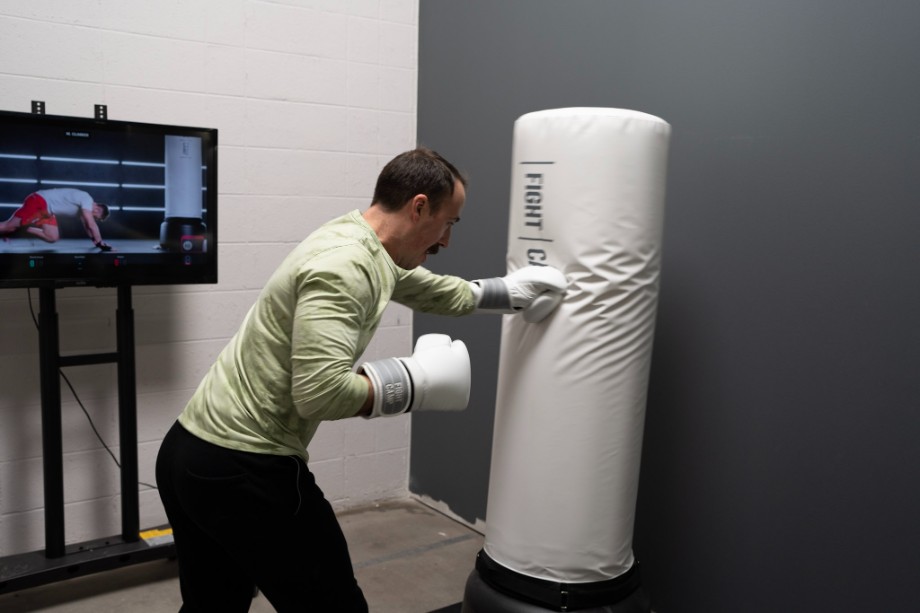
Include Boxing in Your HIIT Workouts
For those who do HIIT cardio workouts at home or in the gym, try adding a boxing element. For example, let’s say you do 40 seconds of work with 20 seconds of rest. You can apply this same format to boxing. This can be on a heavy bag or shadowboxing, and you can still keep your program as-is.
Take Boxing Classes
If you’re enjoying boxing and want to take it a step further, you can replace all—or most—of your current training sessions with boxing classes. This can be regular boxing, kickboxing, or even Muay Thai. Just keep in mind that these classes require dedication and commitment.
For a lower-stakes option, many gyms have “Combat” cardio classes where you can cycle through a series of boxing moves in as little as 20 to 30 minutes. You may also be able to find workouts like this online, enabling you to box in the comfort of your home. Just try not to break anything.
Boxing Stance: Final Thoughts
A proper boxing stance involves the following components:
- Foot position: Your feet should be shoulder-width apart, with one foot in front of the other. They should be at 45-degree angles, and you’ll want to keep your body weight on the balls of your feet.
- Body position: Because your feet are at 45-degree angles, your torso should be at a similar angle. This is ideal because it helps you to see everything surrounding you, get power behind your punches, and reduce the chances of getting hit.
- Hand position: If you’re using an orthodox or southpaw stance, you’ll have a lead hand and a rear hand. Your lead hand should be slightly in front of your chin, with your rear hand to the side of your chin. Both hands should be in closed fists with your thumb on the outside firmly gripping the knuckles of your pointer and middle finger.
There are four types of boxing stances (orthodox, southpaw, crouching, and hands-down), and having a strong stance can help you deliver fast and powerful punches, provide balance and mobility, and help you feel more confident in the ring. There are several ways to incorporate boxing into your training, so finding the stance that works best for you is important.
Boxing Stance: FAQs
How many stances are in boxing?
There are four main stances in boxing:
-Orthodox
-Southpaw
-Crouching
-Hands-down
The orthodox stance is the most popular for right-handed boxers, while left-handed fighters most commonly use the southpaw stance. The crouching stance involves bending your knees and covering your face with both hands, and the hands-down stance involves positioning your hands near your abdominal region.
Is southpaw or orthodox better?
Orthodox is better if you’re right-handed, and southpaw is better if you’re left-handed. In an orthodox stance, your rear hand is your right, and your back leg is your right. This means that you can jab and defend with your lead hand (left hand), but can throw powerful punches on the right side. With southpaw, it’s the opposite (your left hand is your rear hand), so it’s more suited to left-handed fighters.
What is the proper punching position?
The proper punching position involves three components: foot position, body position, and hand position.
-Your feet should be shoulder-width apart and at roughly 45-degree angles.
-Because your feet are at roughly 45-degree angles, your torso should be also.
-One hand should be in front of your chin, and the other to the side of your chin.
It’s important to get all three components correct to maximize the effectiveness of your punches.
How should your feet be positioned in boxing?
In boxing, you should position your feet shoulder-width apart. Depending on the stance you choose, you’ll likely have a lead foot and a rear foot. You don’t want your feet to be facing your opponent, but instead, be at roughly 45-degree angles. You must keep your body weight on the balls of your feet (rather than your heels) to help with balance and mobility.
References
- Dunn EC, Humberstone CE, Franchini E, Iredale KF, Blazevich AJ. Relationships Between Punch Impact Force and Upper- and Lower-Body Muscular Strength and Power in Highly Trained Amateur Boxers. J Strength Cond Res. 2022 Apr 1;36(4):1019-1025. doi: 10.1519/JSC.0000000000003585. PMID: 32218063.
- Olsen O, Sjøhaug M, van Beekvelt M, Mork PJ. The effect of warm-up and cool-down exercise on delayed onset muscle soreness in the quadriceps muscle: a randomized controlled trial. J Hum Kinet. 2012 Dec;35:59-68. doi: 10.2478/v10078-012-0079-4. Epub 2012 Dec 30. PMID: 23486850; PMCID: PMC3588693.



